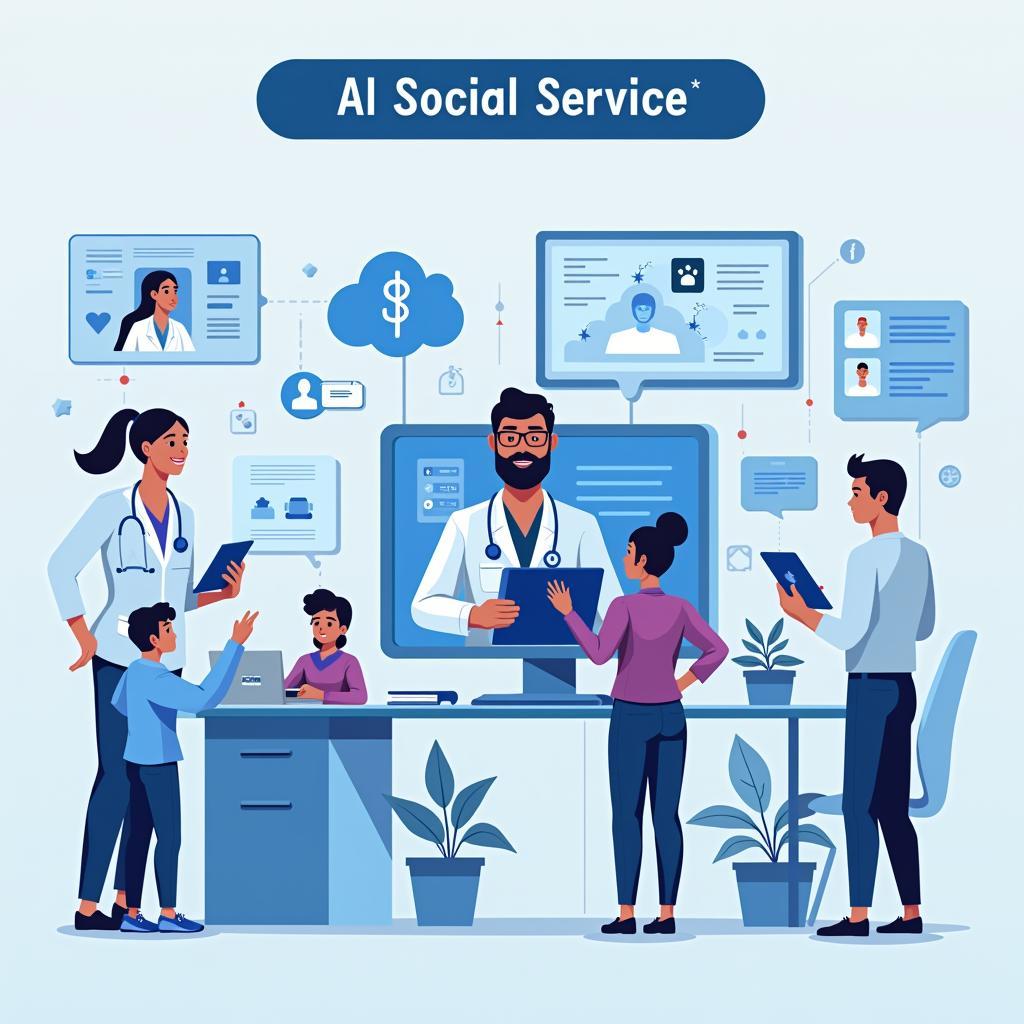Artificial Intelligence and its effects on social welfare has become an increasingly common topic in IELTS Writing Task 2 examinations. Based on analysis of past exam questions from 2020-2023, this theme has appeared in approximately 15% of tests, particularly in questions about technology’s role in society and public services. Let’s examine a recent question that exemplifies this trend.
Table Of Contents
The role of technology in public welfare has become increasingly significant, especially in developing nations. Here’s a recent IELTS Task 2 question on this topic:
Some people believe that artificial intelligence will greatly improve social welfare services and public assistance programs. Others worry it may lead to inequality in access to these services. Discuss both views and give your opinion.
Analysis of the Question
This question requires candidates to:
- Discuss both positive and negative perspectives
- Present a balanced argument
- Provide relevant examples
- State and support their own position
- Use appropriate academic language

Band 9 Sample Essay
The integration of artificial intelligence into social welfare systems has sparked considerable debate regarding its potential benefits and drawbacks. While I believe AI can significantly enhance public services, careful implementation is crucial to prevent accessibility gaps.
AI technology can revolutionize social welfare delivery in several ways. Firstly, automated systems can process applications and distribute benefits more efficiently, reducing administrative delays that often plague traditional welfare systems. For example, in Singapore, AI-powered platforms now handle thousands of assistance applications daily, cutting processing time from weeks to hours. Additionally, machine learning algorithms can analyze vast datasets to identify individuals who need support but haven’t applied, enabling proactive outreach to vulnerable populations.
However, The impact of technology on healthcare access shows that technological solutions can create new forms of exclusion. The primary concern is that elderly citizens and those lacking digital literacy might struggle to navigate AI-based systems, effectively cutting them off from essential services. Moreover, areas with limited internet infrastructure could face significant disadvantages, creating a “digital divide” in welfare access.
In my view, while AI’s potential to improve social welfare is substantial, its implementation must be accompanied by comprehensive support systems. Governments should maintain traditional service channels alongside AI solutions and invest in digital education programs. The role of governments in public welfare must evolve to ensure technology enhances rather than hinders service accessibility.
Band 7 Sample Essay
Artificial intelligence’s role in social welfare services has become a topic of heated discussion. While some see it as a revolutionary tool for improving public assistance, others are concerned about its potential to create new inequalities. I believe both perspectives have merit, but proper implementation can maximize benefits while minimizing drawbacks.
The main advantage of AI in social welfare is its efficiency. Computer systems can process many applications quickly and make decisions based on data. For instance, some countries now use AI to check if people qualify for benefits, which is faster than human processing. AI can also help predict who might need help before they ask for it.
However, there are valid concerns about access problems. Old people and those who don’t know how to use computers might find it hard to use AI systems. Also, poor areas might not have good internet or computers, which could make it harder for people there to get help they need.
I think AI should be used in social welfare, but carefully. Governments need to make sure everyone can still get help, whether they use technology or not. They should also teach people how to use new systems and keep some traditional ways of giving help.
Key Vocabulary
- welfare services (n) /ˈwelfeə ˈsɜːvɪsɪz/ – public assistance programs
- digital literacy (n) /ˈdɪdʒɪtl ˈlɪtərəsi/ – ability to use digital technology
- proactive outreach (n) /prəʊˈæktɪv ˈaʊtriːtʃ/ – reaching out before problems occur
- infrastructure (n) /ˈɪnfrəstrʌktʃə/ – basic physical systems
- implementation (n) /ˌɪmplɪmenˈteɪʃən/ – the process of putting a plan into action
High-scoring Sentence Patterns
-
Complex Contrast:
“While AI offers numerous benefits for social welfare administration, its implementation must be carefully managed to prevent unintended consequences.“ -
Cause-Effect with Modals:
“If properly implemented, AI systems could revolutionize the way social services are delivered, thereby enhancing efficiency and accessibility.” -
Balanced Argument:
“Although concerns about technological exclusion are valid, these challenges can be addressed through comprehensive support systems and maintained traditional service channels.”
Now it’s your turn to practice! Write your own essay addressing this topic and share it in the comments section below. Remember to consider both perspectives and support your arguments with relevant examples.